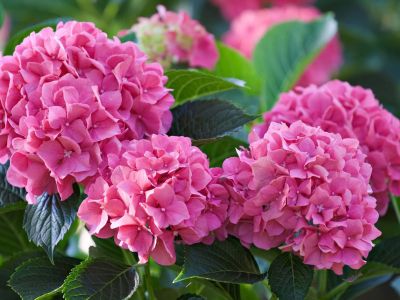Hydrangea Fertilizer for Proper Hydrangea Care and Feeding
Hydrangea care and feeding is fairly simple once you learn some basic rules. Specially formulated hydrangea fertilizer is available but isn’t really necessary. A good all-purpose 12-4-8 or 10-10-10 composition will provide all the fertilizing hydrangeas need. Either a chemical source or organic matter can be used successfully. Applying a once a year slow-release chemical formulated for shrubs and trees is the simplest solution to hydrangea care and feeding. A less expensive fast-release compound will work as well. As for what to use to naturally fertilize hydrangeas, a combination of sulfur, compost, and peat moss has proved to be a successful hydrangea fertilizer.
When and How to Feed Hydrangeas
How to fertilize hydrangeas is just as important as what you’re fertilizing hydrangeas with. Fertilizer burn can occur when too much is applied. Scorched looking leaves are the first sign of too much fertilizing. Hydrangeas should be lightly dressed with fast-release fertilizer in March, May, and July. Be sure to spread it around the drip line of the branches and not the base. Water well. If the fertilizer you choose is a slow-release type, remember to lightly cover it with soil to activate the fertilizer. Include a light bi-annual dose of liquid iron to keep the leaves a healthy green. A discussion of how to fertilize hydrangeas wouldn’t be complete without mentioning the addition of small amounts of sulfur or lime when fertilizing to change hydrangea color. Hydrangeas treated with sulfur will remain or turn blue. Lime results in pink and a change to either color takes time. Please note: white hydrangeas will not change color. Gardeners who practice good hydrangea care and feeding will be rewarded with luxurious foliage and glorious blooms.
